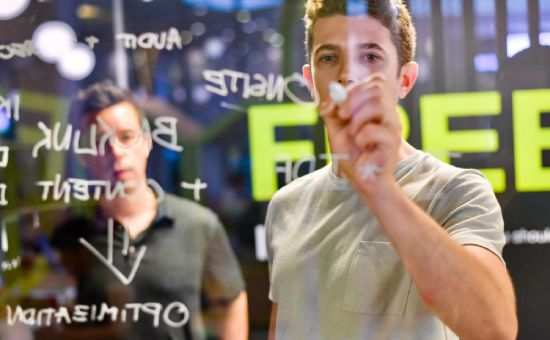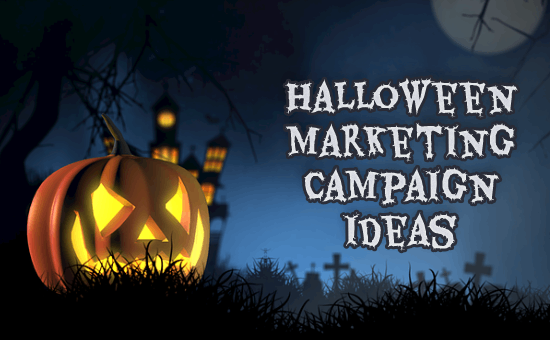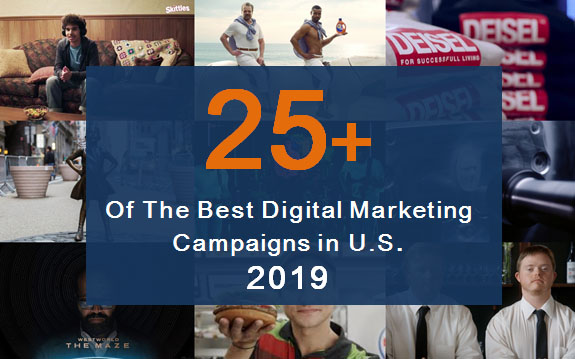How to Prepare your Digital Marketing Campaign for Ramadan 2020?
Marketing Seasons Strategy | Apr 10, 2020
The Ramadan digital marketing season in full swing, it’s just weeks away from now. This holy month is the busiest ad season of the year in MENA region and also some other countries like Indonesia, Singapore, and Malaysia. The standout content that truly engages an audience has the power to drive shopping decisions for the rest of the year.
Ramadan is the Islamic holiday that takes place during the 9th month of the Islamic lunar calendar and is observed by nearly one-quarter of the world (or nearly 1.8 billion people). Throughout this time, Muslims’ daily habits and consumer patterns change, affecting entire countries and populations around the globe.
Ramadan may be a lucrative time for marketing; however, planning and launching a marketing campaign during Ramadan can also be more expensive than at other times of the year.
Now, it’s time to start putting plans in place for your upcoming Ramadan marketing campaign 2020, and for exceptional results, brands need a well-rounded marketing strategy.
So, you need to understand your target customers through data and insights; then up with a well-crafted idea based on those insights to work well across media platforms; and – finally – evaluating your campaigns’ success so you can plan for the following Ramadan.
Read the full guide now, put it into practice, and see how it affects your 2020 Ramadan digital marketing strategy positively.
1: Get to Know Your Ramadan Audience Better
By understanding your target audience’s motivations during Ramadan and its impact on their digital habits, you can deliver tailored and effective messaging to an audience that makes sense for your marketing campaign.
There is a key question to ask yourself before planning any marketing campaign for Ramadan, which is “what exactly do consumers like to watch on social media before, during, and after the holy Ramadan?“
According to Facebook, there were over 280 million people globally have had around 3 billion interactions with content related to Ramadan 2018. Moreover, nearly 1.3 million people stated on Facebook that they were interested in attending over 350,000 events related to Ramadan 2018.
One month before the Holy Month, YouTube cooking videos increase Significantly, peaking 30% higher than average in the first week of Ramadan. Meanwhile, searches for recipes spiked 50% higher than the annual average, especially at the beginning of the month, according to Google.
During Ramadan, cooking videos on YouTube and TV drama series prove very popular, with viewership increasing by 151%, likes by 447%, sharing by 228%, and subscriber sign-up by 490%. Also, Facebook saw a 25% increase in conversations about food during Ramadan 2017.
In terms of online shopping during Ramadan, Criteo’s study revealed that 58% of shoppers in the UAE, 61% in KSA, and 24% in Turkey plan to buy gifts online during Ramadan, with nearly half of them are likely to buy perfume/toiletries online to give as presents during Ramadan.
After Ramadan, air travel and hotel searches increased by 20% to 25%, with Eid seeing the busiest search period in the year, according to Google. 38% of shoppers in the UAE and 42% in KSA planned to travel by plane for Eid in 2018.

The 6 Ramadan Audiences, According to Google
2. Prepare for Ramadan Peaks – Know How and When to Budget for Ramadan Ads
Based on online browsing and buying activity of shoppers, they are browsing and purchasing as early as the month of Ramadan begins. It is vital to maintain your campaign’s momentum throughout the holy month and its pre and post-Ramadan phases.
This year, Ramadan falls almost two weeks earlier than the year before in 2018 – starting around 06 May 2019 – followed by Eid el-Fitr from 3 to 6 June 2019. This means that retailers who plan to grab early-bird sales by drawing traffic to their websites need to be strategizing their re-targeting budgets accordingly.
3. Be Creative and Broaden Your Horizons
A constant challenge for advertisers is creating a well-crafted content that builds personal connections, attracts viewers, and make them want to tune in. This is more critical during Ramadan than any other time as people spend more time watching videos on YouTube, spend more time surfacing social media, perform more searches, and access the internet on their mobiles more often.
This holy month is an ideal opportunity for brands to create unique marketing campaigns for their customers. So, check the following four tips to help get you exceptional results this 2020 Ramadan Marketing.
Use Brand Storytelling to Tell Your Brand Message:
Use popular multi-part stories or web series. The best example in this regard was done successfully during Ramadan 2018 by Makeup Forever’s all-star Ramadan YouTube series that truly engaged audiences.
Make Your Story Heard & Your Audience Eager for More:
For example, if you’re planning to use video ads, then you need to be fast and start strongly. You should tell what your audience needs to hear within the first 5 seconds; including the brand and the core message. Also, you should design your story and key message so it can be delivered in several ways, and try to keep the audience engaged by showing multiple cuts of your story at a faster pace. Needless to say that, you should keep repeating your main call-to-action in all videos.
Don’t Be Afraid to Be Different:
Try to be unexpected and surprise your audience and keep them engaged with your brand. Use contrasting approaches to capture attention by challenging the status quo in your storytelling (EX: defying character stereotypes). You can also use exaggeration and don’t be afraid to take creative risks or exaggerate. These differences make your ad memorable.
Be Seamless, Accurate, Consistent, and Useful:
All consumers seek to gain more information, about brands, restaurants, best deals, etc, during Ramadan. It would be better to leverage signals like time, location and interest from Google tools to adjust your creative automatically (Ex: dynamic countdown banners to ‘Iftar’) and provide other information that matters to your audience.
4. Maximize Your Mobile Use
In the last five years, smartphone penetration worldwide exceeded 60% and during Ramadan, people spend much more time online on their mobile devices than any other period. With this in mind, it’s clear that understanding how people are interacting with ads and brands is crucial.
In case you have your own website, it must be speedy and mobile-friendly for optimal marketing results. According to Google’s Internal Data, 50% of internet users leave a mobile site if the pages don’t load within 3 seconds, 50% will use the site less often if it isn’t mobile-friendly, and nearly half of users feel frustrated when they get into a site isn’t mobile-friendly.
5. Evaluate Your Ramadan Digital Marketing Campaign and Measure success
Now, we reached the last and most important step in your Ramadan digital marketing strategy which is measuring success. This step is differentiated based on the type of your marketing campaign (e.g. direct mail; social media marketing, outbound calling; TV, Print, Radio advertising; public relations campaigns, etc.).
Final Word
Ramadan is the most important festive season in the Islamic world. Rapidly rising disposable incomes, the increasing media consumptions, a growing appetite for modest fashion, halal products and services mean that marketers need to enlist smart and powerful marketing solutions to engage customers across all touchpoints in the customer journey and deliver the most impactful content at every point.





